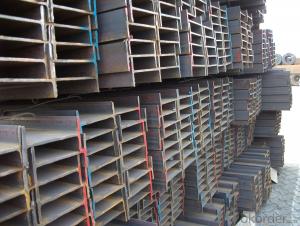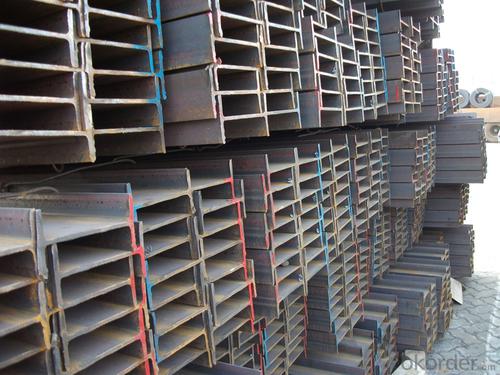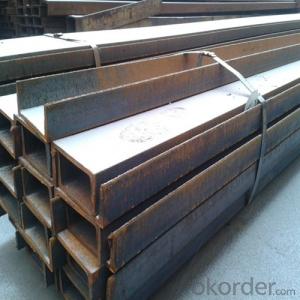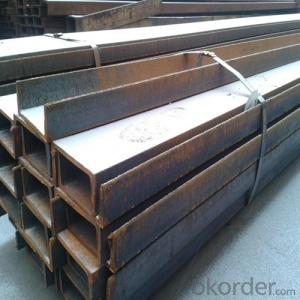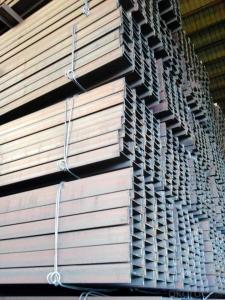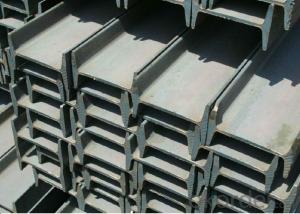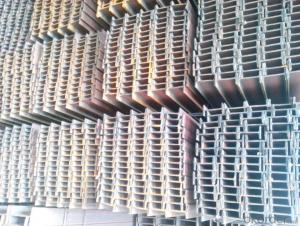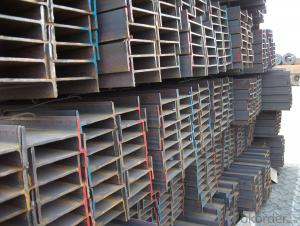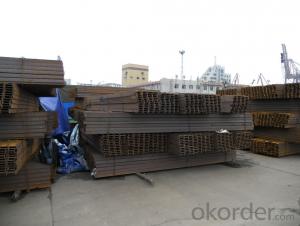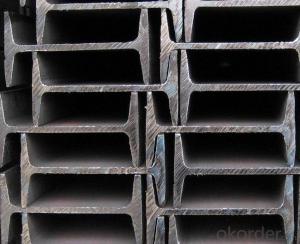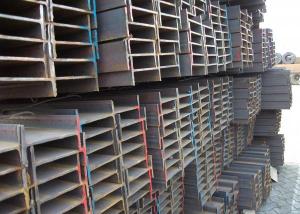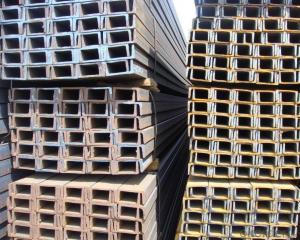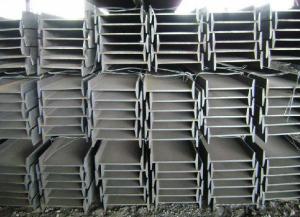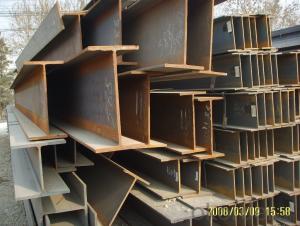Steel I Beams EN Standard IPE / IPEAA in High Quality
- Loading Port:
- Tianjin
- Payment Terms:
- TT or LC
- Min Order Qty:
- 500 m.t.
- Supply Capability:
- 1000 m.t./month
OKorder Service Pledge
OKorder Financial Service
You Might Also Like
OKorder is offering Steel I Beams EN Standard IPE / IPEAA in High Quality at great prices with worldwide shipping. Our supplier is a world-class manufacturer of steel, with our products utilized the world over. OKorder annually supplies products to African, South American and Asian markets. We provide quotations within 24 hours of receiving an inquiry and guarantee competitive prices.
Product Applications:
Steel I Beams EN Standard IPE / IPEAA in High Quality are ideal for structural applications and are widely used in the construction of buildings and bridges, and the manufacturing, petrochemical, and transportation industries.
Product Advantages:
OKorder's Steel I Beams EN Standard IPE / IPEAA in High Quality are durable, strong, and wide variety of sizes.
Main Product Features:
· Premium quality
· Prompt delivery & seaworthy packing (30 days after receiving deposit)
· Can be recycled and reused
· Mill test certification
· Professional Service
· Competitive pricing
Product Specifications:
1. Manufacture: Hot rolled
2. Standard: EN10025, GB Standard, ASTM
3. Grade: Q235B, Q345B, SS400, ASTM A36, S235JR, S275JR
4. Length: 5.8M, 6M, 9M, 12M as following table
5. Sizes: 80mm-270mm
Dimensions(mm) | |||||
h | b | s | t | Mass Kg/m | |
IPE80 | 80 | 46 | 3.80 | 5.20 | 6.00 |
IPE100 | 100 | 55 | 4.10 | 5.70 | 8.10 |
IPE120 | 120 | 64 | 4.80 | 6.30 | 10.40 |
IPE140 | 140 | 73 | 4.70 | 6.90 | 12.90 |
IPE160 | 160 | 82 | 5.00 | 7.40 | 15.80 |
IPE180 | 180 | 91 | 5.30 | 8.00 | 18.80 |
IPE200 | 200 | 100 | 5.60 | 8.50 | 22.40 |
FAQ:
Q1: Why buy Materials & Equipment from OKorder.com?
A1: All products offered byOKorder.com are carefully selected from China's most reliable manufacturing enterprises. Through its ISO certifications, OKorder.com adheres to the highest standards and a commitment to supply chain safety and customer satisfaction.
Q2: How do we guarantee the quality of our products?
A2: We have established an advanced quality management system which conducts strict quality tests at every step, from raw materials to the final product. At the same time, we provide extensive follow-up service assurances as required.
Q3: what is the difference between actual weight and theoretical weight?
A3: All the section steel has two weights: actual weight and theoretical weight. Actual weight is the weighing out when the product delivered from the mill. Theoretical weight is calculated by pieces. The invoice can be based on each of them as your request.
Images:
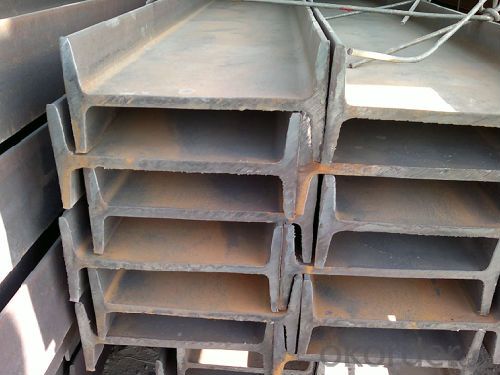
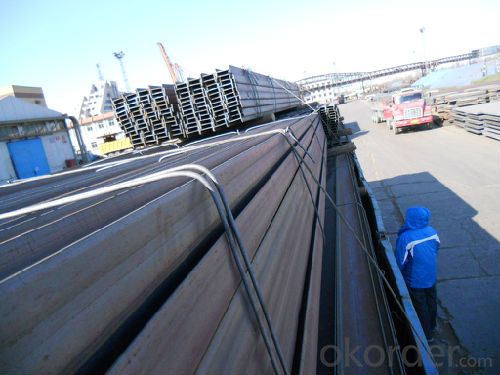
- Q: Can steel I-beams be used for residential construction?
- Yes, steel I-beams can be used for residential construction. Steel I-beams are commonly used in residential construction for their strength, durability, and versatility. They are often used as load-bearing elements in the construction of floors, walls, and roofs. Steel I-beams provide excellent structural support and can span long distances, allowing for larger open floor plans and flexible design options. Additionally, steel is non-combustible and resistant to rot, pests, and weathering, making it a popular choice for residential construction.
- Q: What are the common methods of connecting steel I-beams to concrete structures?
- Various factors, including load requirements, structural design, and project specifications, determine the choice of method for connecting steel I-beams to concrete structures. Some commonly employed techniques include: 1. Embedding: Steel I-beams are embedded directly into the concrete structure by pouring concrete around their ends. This results in a robust and stable connection between the steel beams and the concrete structure. 2. Welding: Steel plates or brackets are welded onto the ends of the beams and then embedded or bolted into the concrete. Welding offers a durable and strong connection, often used in applications with high loads. 3. Bolting: Steel plates or brackets with pre-drilled holes are attached to the beam ends, and these plates are secured to the concrete using anchor bolts. Bolting allows for easy installation and disassembly, making it suitable for temporary structures or situations requiring frequent adjustments. 4. Epoxy adhesive: Epoxy adhesive is utilized to connect steel I-beams to concrete structures where drilling or welding is not preferred or feasible. Steel plates or brackets are bonded to the concrete using epoxy adhesive, creating a reliable and aesthetically pleasing connection. 5. Mechanical connectors: Mechanical connectors, such as steel clamps or brackets, are commonly employed to connect steel I-beams to concrete structures. These connectors offer a secure and adjustable connection, facilitating easy installation and beam alignment. Mechanical connectors are typically used in applications requiring flexibility and adjustability. It is essential to note that the specific method for connecting steel I-beams to concrete structures may vary based on project requirements, local building codes, and engineering recommendations. Consulting a structural engineer or professional in the field is crucial to ensure the appropriate technique is chosen for a specific project.
- Q: Are steel I-beams suitable for supporting rooftop HVAC units?
- Yes, steel I-beams are commonly used to support rooftop HVAC units due to their strength and load-bearing capabilities.
- Q: How do steel I-beams perform in terms of thermal conductivity?
- Steel I-beams are renowned for their remarkable thermal conductivity, which refers to a material's capacity to conduct heat. Steel, being one of the most commonly utilized thermally conductive materials in construction, ensures that heat can be proficiently transferred from one location to another. The impressive thermal conductivity of steel I-beams renders them ideal for situations that necessitate or desire heat transfer. In the context of buildings, steel I-beams play a crucial role in evenly distributing heat throughout the structure, thereby guaranteeing a consistently comfortable temperature in various areas. This advantage proves particularly beneficial in sprawling commercial buildings or industrial facilities where maintaining a steady temperature is vital for productivity or occupant comfort. Furthermore, the high thermal conductivity of steel I-beams also makes them suitable for applications that require heat dissipation or removal. For instance, they can be effectively employed in heat exchangers or cooling systems, where their efficient heat conduction capabilities enable the rapid transfer of thermal energy. Nevertheless, it is essential to acknowledge that the notable thermal conductivity of steel I-beams can present challenges in certain scenarios. In regions characterized by extreme temperature variations, these I-beams may facilitate the transfer of heat from warmer to cooler areas, potentially resulting in energy loss and escalated heating or cooling expenses. In such cases, it may be necessary to incorporate additional insulation or thermal barriers to minimize heat transfer. To summarize, steel I-beams possess exceptional thermal conductivity, allowing for efficient heat transfer. This characteristic renders them suitable for applications that require heat distribution or dissipation, although certain situations may warrant additional considerations to optimize energy efficiency.
- Q: Are steel I-beams suitable for earthquake-prone regions?
- Indeed suitable for earthquake-prone regions are steel I-beams. Construction in such areas extensively utilizes them due to their exceptional strength and resilience. Steel, known for its high tensile strength, allows I-beams to withstand lateral forces and vibrations caused by earthquakes. The design of steel I-beams also contributes to their suitability for earthquake-prone regions. Specifically engineered, these beams distribute and dissipate seismic forces, reducing the risk of structural failure during an earthquake. Additionally, their flexibility enables them to bend and flex during seismic activity, absorbing and dissipating the energy generated by the earthquake. Moreover, steel I-beams offer several advantages over other structural materials in earthquake-prone regions. Being lightweight, they are easier to handle and transport, and their high strength-to-weight ratio allows them to support heavy loads without excessive bulk. This makes them ideal for constructing earthquake-resistant buildings and infrastructure. Furthermore, steel is a highly durable material that does not degrade over time, making it a reliable choice for long-term use in seismic zones. It is also resistant to corrosion, which is crucial in areas where seismic events can cause water damage to structures. Overall, steel I-beams have proven to be a reliable and effective solution for construction in earthquake-prone regions. Their strength, flexibility, and durability make them capable of withstanding the forces generated by earthquakes, ensuring the safety and stability of buildings and infrastructure in these areas.
- Q: Can steel I-beams be customized for specific projects?
- Certainly, specific projects can have steel I-beams customized to meet their requirements. Steel I-beams, known for their strength and ability to bear loads, are commonly used in construction due to their versatility. They can be tailored in terms of size, shape, and material specifications to suit the distinctive needs of a project. The customization of steel I-beams involves modifying their dimensions, such as length, width, and depth, to meet the precise load and span requirements of a structure. This grants engineers and architects the opportunity to design structures that function optimally and ensure safety. Moreover, steel I-beams can be manufactured from various types of steel, including carbon steel, stainless steel, or alloy steel, depending on the project's demands. This allows for the customization of the beams to ensure compatibility with the surrounding environment, such as resistance to corrosion in coastal areas or enhanced strength for heavy industrial applications. Furthermore, customization can entail incorporating specific features, such as holes, notches, or cut-outs, in the I-beams to facilitate connections with other structural components, accommodate utility conduits, or enable easy installation. In conclusion, steel I-beams can indeed be customized for specific projects. The ability to tailor their dimensions, material composition, and additional features enables the creation of structurally sound and efficient designs that meet the unique requirements of any construction project.
- Q: Can steel I-beams be used in retrofitting existing structures?
- Indeed, it is possible to utilize steel I-beams for the purpose of retrofitting preexisting structures. Retrofitting, a process aimed at enhancing the performance and compliance with current building codes and regulations of existing structures, involves the reinforcement or upgrading of such structures. Steel I-beams are commonly employed in retrofitting due to their exceptional strength-to-weight ratio, versatility, and durability. To retrofit existing structures using steel I-beams, a structural engineer must first evaluate the load-bearing capacity of the structure and determine the necessary modifications. Depending on the specific requirements of the project, steel I-beams can be utilized to either reinforce or replace existing structural components like columns, beams, or walls. The installation of steel I-beams can be achieved through various methods, such as bolting or welding, depending on the precise project requirements. Moreover, steel I-beams can be tailored to meet the specific retrofitting needs in terms of size, shape, and strength. Steel I-beams provide several benefits in retrofitting existing structures. Their high tensile strength enables them to withstand significant loads and resist deformation. Additionally, they possess fire-resistant qualities, thereby enhancing the safety of the retrofitted structure. Furthermore, steel I-beams are comparatively lightweight in comparison to alternative materials, making them easier to handle and install. In conclusion, steel I-beams serve as a versatile and efficient option for retrofitting existing structures. Their strength, durability, and ease of installation render them ideal for enhancing the structural integrity and performance of buildings while adhering to contemporary building codes and standards.
- Q: What is the weight-bearing capacity of steel I-beams?
- The weight-bearing capacity of steel I-beams can vary depending on a few factors such as the size and shape of the beam, the type of steel used, and the span or distance between supports. Generally, steel I-beams are known for their high strength-to-weight ratio and can support significant loads. To determine the weight-bearing capacity of a specific steel I-beam, engineers and architects often refer to structural design codes and calculations. These codes provide guidelines and formulas for calculating the maximum load a beam can safely withstand without experiencing excessive deflection or failure. For example, in the United States, the American Institute of Steel Construction (AISC) provides design standards and specifications for steel structures. The AISC Manual of Steel Construction contains comprehensive tables and charts that allow engineers to determine the load capacity of different beam sizes and configurations. In addition to the design codes, other factors such as the type of loading (e.g., dead loads, live loads, or dynamic loads) and the support conditions (e.g., simply supported or continuous) also influence the weight-bearing capacity of steel I-beams. Therefore, it is essential to consult the appropriate design codes and work with a qualified structural engineer or professional to accurately determine the weight-bearing capacity of steel I-beams for a specific application.
- Q: How do steel I-beams perform in terms of wind uplift resistance?
- Steel I-beams perform exceptionally well in terms of wind uplift resistance. The structural properties of I-beams, such as their high strength and stiffness, allow them to effectively resist the forces exerted by strong winds. Additionally, the streamlined shape of I-beams reduces the impact of wind pressure, further enhancing their performance against uplift forces.
- Q: How do steel I-beams perform in terms of creep and shrinkage?
- Steel I-beams perform very well in terms of creep and shrinkage. Due to their high structural rigidity and strength, they exhibit minimal creep, which is the gradual deformation under sustained loading. Additionally, steel has low shrinkage properties, meaning it experiences minimal dimensional changes over time. Overall, steel I-beams are highly resistant to creep and shrinkage, making them a reliable choice for structural applications.
Send your message to us
Steel I Beams EN Standard IPE / IPEAA in High Quality
- Loading Port:
- Tianjin
- Payment Terms:
- TT or LC
- Min Order Qty:
- 500 m.t.
- Supply Capability:
- 1000 m.t./month
OKorder Service Pledge
OKorder Financial Service
Similar products
Hot products
Hot Searches
Related keywords
